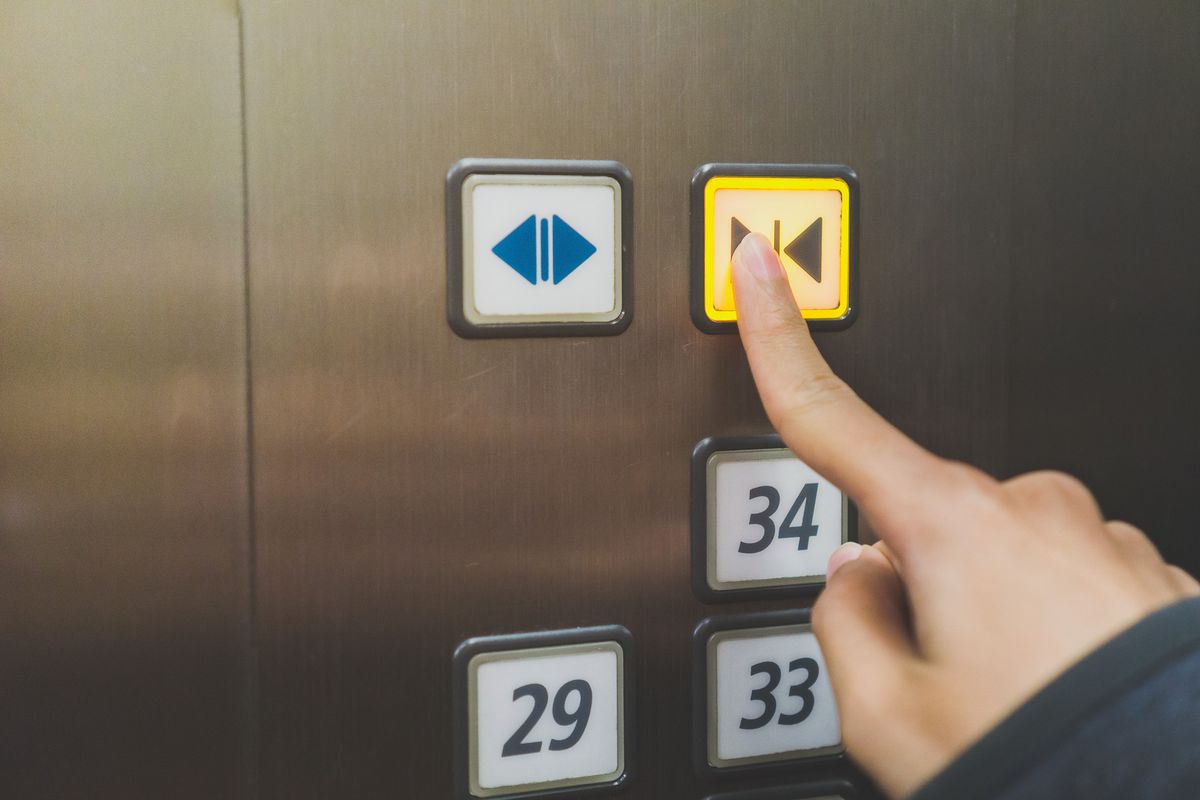The open elevator door button puts kindness at our fingertips
Elevator buttons can sometimes be fickle things — confusing labels or tricky security systems can start a trip up or down a building off on a slightly sour note. But on the control panel, there’s one button that stands out for its ability to make someone’s day instead of ruining it: the open door button.
There’s no mystery as to what its job is. If the elevator doors are open, pressing and holding the open door button will usually make sure they stay that way. If the doors have started to close, jabbing the button often adorned with an icon of opposing arrows should stop the process and make the elevator accessible again.
What makes the open door button special is that it gives elevator passengers (the ones standing within arm’s reach of the control panel, anyways) a rare opportunity: the ability to help out a stranger with little to no effort or inconvenience. For many of us, it’s become almost an instinct to press the button when we see someone running or walking with purpose toward the elevator we’re currently in, letting them get on instead of having to wait around for another car to come by.
In the context of controlling a machine or gadget, the open door button stands out in another way. Usually, when we press a button, it’s to make something happen — we want to turn on a coffee maker, take an action in a game, or warm a burrito up just a tad more. Not many buttons are made to prevent something from happening, but that’s exactly what you’re doing by telling the elevator to keep the doors open. In fact, I’m not sure I can think of any other buttons I use in my daily life that I press to explicitly tell a system to just keep everything the way it is right now.
Often in this column, we talk about the tactile experience of using a button. That’s not really possible with the open door button because, while many elevators have it, the button itself has a wide range of physical forms. Some of them are sublime, heavy metal buttons with a satisfying click and a light that indicates that, yes, the control unit has received your message and is working on opening the doors. Some of them are awful — the gross plastic ones that provide barely any feedback, like you’re mashing on a broken butterfly key.
For the most part, though, the actual physical sensation of pressing the open door button (sometimes frantically, at the last second before the doors fully close) is secondary. The real reward for pressing it is the emotional rush; you’ve helped a stranger not miss a meeting or given a friend extra time to maneuver something heavy into the lift.
This is slightly overdramatic, but as I watch another person make it through the open doors and into the elevator, I feel like a bit of a hero. We humans worked together to stop the machine from coldly carrying out its mechanical route without any regard for humanity’s needs.
If I’ve learned anything from comics, though, a hero’s best gadgets also have a villainous counterpart — Spider-Man flies around the city on webs, while the Green Goblin uses a hoverboard. For the open door button, that’s, perhaps unsurprisingly, the close door button.
Its evil is twofold; if the open door button gives us a chance to help someone out, a button that lets us close the door gives us a chance to screw someone over for the chance to get to our floor a bit faster. Sure, there are times when closing the door won’t harm anyone, like if we know for sure that no one else needs to ride the elevator, but more often than not, the close door button exists to tempt our selfish instincts.

It’s also almost certainly useless. According to The New York Times, close door buttons on pretty much every elevator in service today don’t actually make the doors close any faster unless you have a special key or code meant for firefighters or service personnel. This is, apparently, thanks to a mandate in the Americans With Disabilities Act that requires most elevator doors to stay open for at least 20 seconds — even if someone immediately gets in the car and starts jamming the close door button. While its uselessness is probably good for humanity, a button that doesn’t do what you expect is a bad button.
Thankfully, the open door button does actually do what it’s meant to. And in a world of buttons that we push to make our life easier, it’s a refreshing reminder that sometimes a button can be used to make someone else’s life easier, too.
PS: if you’re a fan of elevator buttons, definitely check out this iconic piece of Verge lore about the extremely confusing ones at our office.
Read the full article Here


